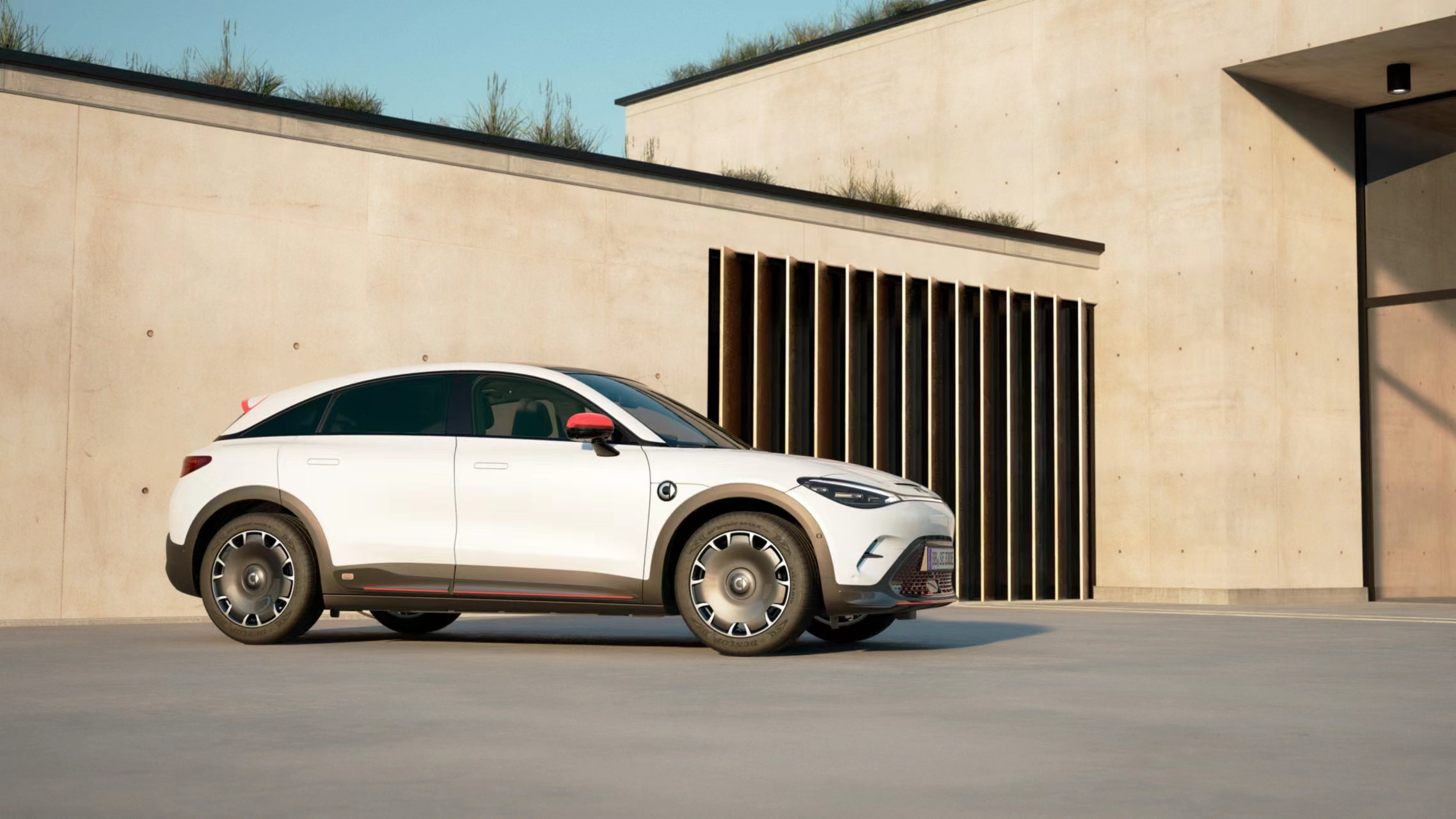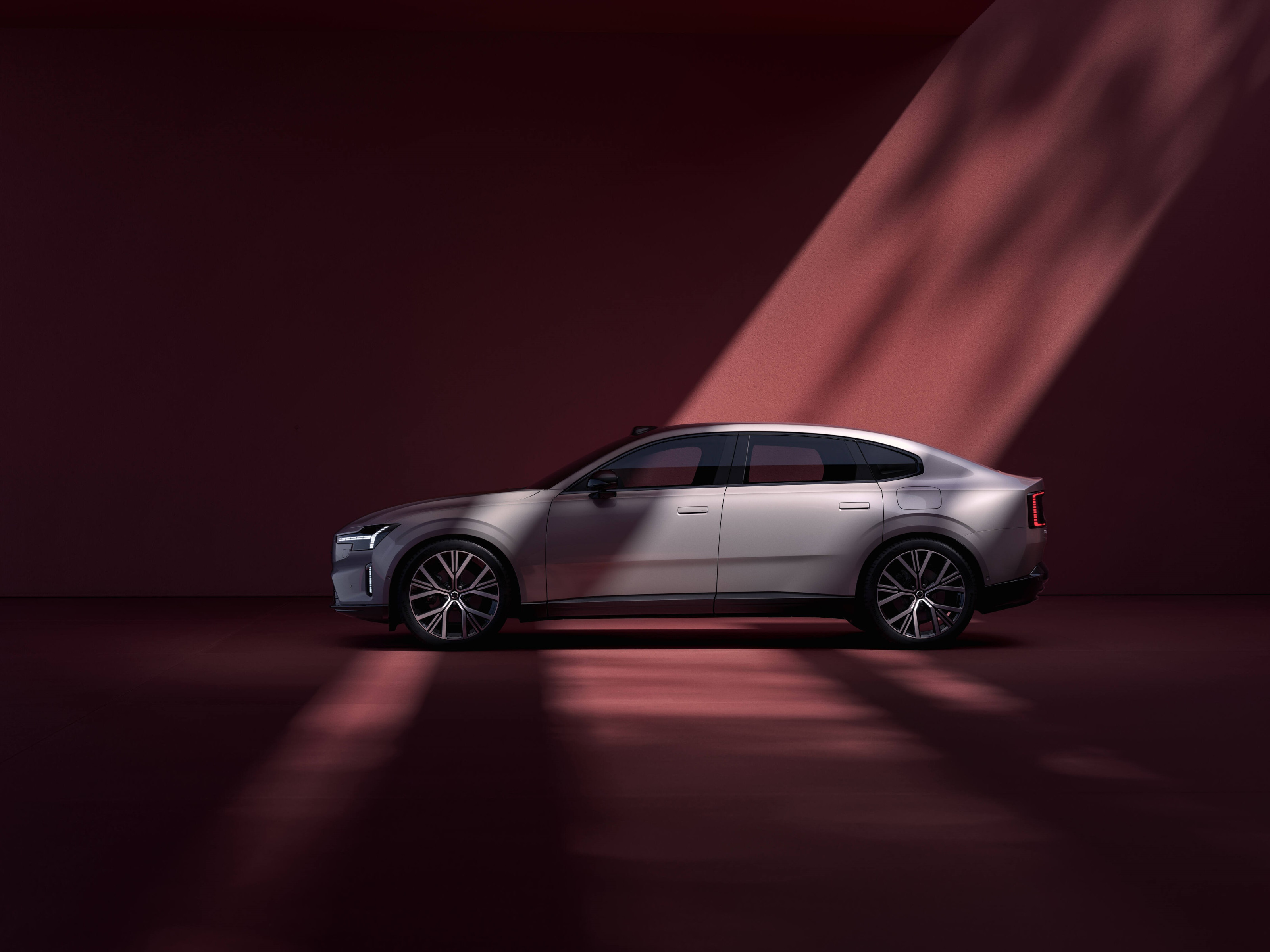Volvo’s ultra-efficient EX30 compact EV gets its first real competition, the new Smart #3
We experience the highly rated Volvo EX30 and Smart’s most recent foray into pure electric cars, the #3. Which is the best executed small SUV?

It’s time to re-sample Volvo’s EX30 and ponder on what makes it such a special car. When the EX30 was announced last year the compact, trim stance of this small SUV represented a different, more acceptable take on that most benighted segment of the car market, and after driving it on the launch in Barcelona earlier this year, these preconceptions were confirmed. It’s one of the best EVs on the market.

The Volvo EX30 has a cleaner, simpler look
As a result, the Volvo EX30 is now a bona fide award winner, with a Wallpaper* Smart Space Award to its name, as well as a cluster of accolades from other publications, plus acknowledgement in the 2024 Red Dot Design Awards. Taking the EX30 onto UK roads to see if the well-chosen routes and generous hospitality of a car launch had impacted excessively on our feelings, did nothing to disabuse us of its abilities.

Volvo EX30 on the road
With three model choices – Single Motor, Single Motor Extended Range and Twin Motor Performance, the benefits and downsides of EV ownership are laid out starkly; the cheapest car has the poorest range, whilst the most expensive model has the best acceleration.
Naturally we’d suggest going somewhere in the middle, where a 295.8 mile combined range can be found (up to 367.9 miles in urban driving, according to Volvo). The top spec model provides frankly incredibly performance for a car in this sector, let alone a family EV (3.6 seconds to 100km/h), and can charge from 10-80% in half an hour.

Smart #3, the second car from Smart's new generation
But now there’s a competitor, a car that’s cut from the same cloth (as we will see later), but which offers a rather different aesthetic approach. The Smart #3 is car two from the reborn Smart brand, following on from the Smart #1 (yes, one pronounces the hashtag out loud), launched in 2022.
The #3 offers exactly the same charging benefits and only a mildly shorter range (283 miles) than the EX30. Performance also reaches parity with the Volvo, but only if you specify the BRABUS special edition, which costs £45,450, knocks the range down to 258 miles but gives the all-important (to some) acceleration figure of 0-100km/h in 3.7 seconds. The Smart has a 66kWh battery, whilst the mid and upper level EX30 offer a 69kWh unit.

Inside the Smart #3 it's rather more playful than the Volvo
It's all too close to call, but time spent with both cars revealed a sharper, more focused character to the way the Volvo tackles the road and corners in particular. The Smart #3 never feels quite that dialled in, but it has a perkier interior, with rather less hairshirt minimalism than the Volvo. However, where Volvo has partnered with Google for its generally excellent display and interface, the #3’s designers seem to have mistaken babyish for cute.
Receive our daily digest of inspiration, escapism and design stories from around the world direct to your inbox.

Character study: the Smart #3 interface
Hence you get a cartoonish world map as a symbol for the nav system and, worse still, an animated cheetah that serves as a visual avatar for the car’s voice recognition system. This character inhabits the Smart’s dashboard monitor, occasionally stretching its pixelated limbs. And would never fly in Volvo’s world of logical modernism. Instead, neat touches include the little IKEA-style diagram baked in the boot lining to neatly illustrate the maximum available dimensions.

Sober Scandi sensibilities in the Volvo EX30
Both brands rely on these little flashes of design eccentricity to emphasise their overall message and ethos, but overall the Volvo is less cloying and twee. It’s a more grown up car, and feels too mature for some of the Smart idiosyncrasies that feel less than smart, like the baffling pebble-like keyfob. While Volvo has partnered with Google for mapping and Bowers & Wilkins for its audio, the Smart gets speakers from Beats Audio.

The Volvo EX30's stripped back dashboard
Overall, however, the two cars are incredibly evenly matched. Of course there’s a reason for this, and that reason is Geely. The Chinese company has been Volvo’s steward for many years now, bringing investment, factories and technology to the Swedish company without seemingly affecting its core values or its essential ‘Volvo-ness’. Smart is a slightly different matter.
The company’s origins dates back to the early 80s, when the late watch entrepreneur Nicolas Hayek sought to apply the hugely successful marketing and technical underpinnings of his Swatch brand to the auto industry. The ‘Swatchmobile’ quickly became a co-project with VW, only to be canned by incoming VW Group CEO Ferdinand Piëch. In 1994, Hayek inked in a deal with Daimler-Benz, owners of Mercedes.

The Smart #3 is pitched at a more youthful market
The car that came to define the Smart brand, the two-seater City-Coupé, later renamed the fortwo, came out of this partnership. The name Swatchmobile got lost along the way, although ‘smart’, the eventual nomenclature, allegedly evolved from a compromised solution, ‘S’watch ‘M’ercedes ‘ART’.
In 2019, Daimler tapped Geely to re-shape and re-invigorate the Smart brand in the face of growing EV competition, using the Chinese giant’s well-honed electrification skills (as an aside, Smart has always been branded with a lower-case ‘s’, the type of decision that plays havoc with written text, so apologies for not conforming to it here).

Smart #3 interior
Smart #3 followed in 2023. Both cars use the same platform, albeit slightly lengthened in the case of the #3. Also sharing that platform? The Volvo EX30. Both are Chinese made: the EX30 is built in Zhangjiakou, while the #3 is built in Xi'an.
From 2025, the Volvo will also be built in Ghent, Belgium, alongside the XC40 and C40 models, partly as a way to circumvent increasingly stringent Chinese import tariffs. How these will impact Smart’s European revival are yet to be seen. Late last year, Volvo previewed the EX30 Cross Country, reviving the brand’s line-up of chunkier styled, more off-road capable models.

The forthcoming Volvo EX30 Cross Country
Whereas Volvo has a very accomplished line-up of models ranging from the EX30 up to the large EX90 and XC90, the Smart #3 is (confusingly) only the second model from the new generation iteration of the brand. Next up is Smart #5 (also confusingly), a full-size SUV that puts the final nail in the coffin of Nicholas Hayek’s vision of an ultra-compact city car that’s playfully styled and as precisely engineered as a Swiss watch.

The new Smart #3
With two vehicles that are ostensibly identical in price and performance and differentiated only by design, the Smart and the Volvo showcase the challenges facing the global car market, a place where the application individuality risks tipping into caricature if not done with care. The Smart is a fine car with some distracting eccentricities. The Volvo, on the other hand, just gets things done without unnecessary fuss.

The new Smart #3
Volvo EX30, from £32,850 for Single Motor model. Twin Motor Performance model from £41,600, VolvoCars.com, @VolvocarUK
Smart #3, from £32,950, BRABUS Performance edition from £45,450, UK.Smart.com, @Smart_Worldwide
Jonathan Bell has written for Wallpaper* magazine since 1999, covering everything from architecture and transport design to books, tech and graphic design. He is now the magazine’s Transport and Technology Editor. Jonathan has written and edited 15 books, including Concept Car Design, 21st Century House, and The New Modern House. He is also the host of Wallpaper’s first podcast.
-
 Year in Review: we’re always after innovations that interest us – here are ten of 2025’s best
Year in Review: we’re always after innovations that interest us – here are ten of 2025’s bestWe present ten pieces of tech that broke the mould in some way, from fresh takes on guitar design, new uses for old equipment and the world’s most retro smartwatch
-
 Art and culture editor Hannah Silver's top ten interviews of 2025
Art and culture editor Hannah Silver's top ten interviews of 2025Glitching, coding and painting: 2025 has been a bumper year for art and culture. Here, Art and culture editor Hannah Silver selects her favourite moments
-
 In Norway, remoteness becomes the new luxury
In Norway, remoteness becomes the new luxuryAcross islands and fjords, a new wave of design-led hideaways is elevating remoteness into a refined, elemental form of luxury
-
 Volvo ES90 brings calm, quiet Scandi sophistication to the electric saloon car market
Volvo ES90 brings calm, quiet Scandi sophistication to the electric saloon car marketThe new Volvo ES90 is one of the few contemporary automobiles that could truly be described as quintessentially modernist. We take it for a ride
-
 We review the Volvo EX30 Cross Country, a pocket off-roader EV with charm and ability
We review the Volvo EX30 Cross Country, a pocket off-roader EV with charm and abilityVolvo introduces the first Cross Country model of the electric age, an EX30 that’s been toughened up inside and out
-
 Volvo takes to the snowy Swedish wilderness to reveal its new EX30 Cross Country
Volvo takes to the snowy Swedish wilderness to reveal its new EX30 Cross CountryThe Volvo EX30 Cross Country is a chunkier sibling for one of our favourite small electric cars
-
 The new Volvo EX90 is the brand’s flagship EV. We take it for a spin in Newport Beach
The new Volvo EX90 is the brand’s flagship EV. We take it for a spin in Newport BeachVolvo might have broken out of the box, but it’s still a byword for solidity, simplicity and subtle charm
-
 New Kia EV3 shows how the Korean brand’s bold aesthetic approach works at any scale
New Kia EV3 shows how the Korean brand’s bold aesthetic approach works at any scaleThe newly revealed Kia EV3 has all the chunky, geometric appeal of the bigger EV9 in a compact and clever package
-
 24 transportation design innovations for 2024
24 transportation design innovations for 2024From electric cars to new airports and sports boats, here’s a non-exhaustive list of 24 of the most interesting transportation design innovations to expect in the coming year
-
 Volvo EM90 is the brand’s all-electric first foray into the Multi-Purpose Vehicle
Volvo EM90 is the brand’s all-electric first foray into the Multi-Purpose VehicleSo far only China will get the new Volvo EM90 MPV; we think it has global potential
-
 New downsized Volvo EX30 is the brand’s most drivable car – is it also its most desirable?
New downsized Volvo EX30 is the brand’s most drivable car – is it also its most desirable?If you’re searching for an EV that’s small on footprint – both physically and environmentally – the new Volvo EX30 is definitely worth a closer look